
Wide, sweeping coves such as those found in crown molding and raised panels are a hallmark of good woodworking. But how do you achieve them without a large-scale molding machine? On the table saw, of course.
Cutting coves on a machine used primarily for ripping, crosscutting, and joinery is unorthodox. But if done correctly, it’s a safe and efficient method. Essentially, you run a workpiece along a fence and diagonally over the blade in a series of shallow passes, to take advantage of the blade’s curvature.
Adjusting the height of the blade and the feed angle of the piece varies the depth and width. While the resulting cut requires a lot of sanding to remove the saw marks, the technique offers more versatility than stock profiles on cutters you’d use in a router or shaper.
While there is no magic in setting up to cut coves, a parallelogram jig simplifies the process. In this article, I’ll demonstrate how to set up and cut coves—and half covers—first using typical layout tools, then with the jig.
Cove terminology and layout
A cove cut is defined by its width and depth. With wide, shallow coves, the curve is close to being a true arc, but with narrow, deep coves, the shape is more elliptical. The other key dimension is the offset, or distance from the edge of the board to the edge of the cove.
هذه القصة مأخوذة من طبعة October - November 2021 من Woodcraft Magazine.
ابدأ النسخة التجريبية المجانية من Magzter GOLD لمدة 7 أيام للوصول إلى آلاف القصص المتميزة المنسقة وأكثر من 9,000 مجلة وصحيفة.
بالفعل مشترك ? تسجيل الدخول
هذه القصة مأخوذة من طبعة October - November 2021 من Woodcraft Magazine.
ابدأ النسخة التجريبية المجانية من Magzter GOLD لمدة 7 أيام للوصول إلى آلاف القصص المتميزة المنسقة وأكثر من 9,000 مجلة وصحيفة.
بالفعل مشترك? تسجيل الدخول
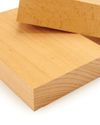
Beech
Plain looks, but a solid performer
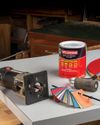
Working with PLASTIC LAMINATE
Adding a durable, smooth, and colorful surface to your work
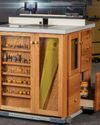
High-Tech ROUTER TABLE
A state-of-the-art shop essential

Albers-Inspired NESTING TABLES
A colorful array of Bauhaus utility

Desktop ORGANIZERS
Mini modules for your modern workspace
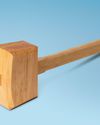
Joiner's MALLET
A hard-hitting shop hammer
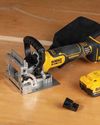
Battery-backed biscuiting
DeWalt 20V Max XR Biscuit Joiner
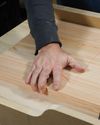
Crosscut SLED
A basic build of a crucial table saw accessory
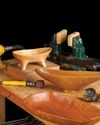
Power-carving BOWLS
Tools and techniques for sculpting

Library STEPS
Mitered box joints give rise to an updated classic